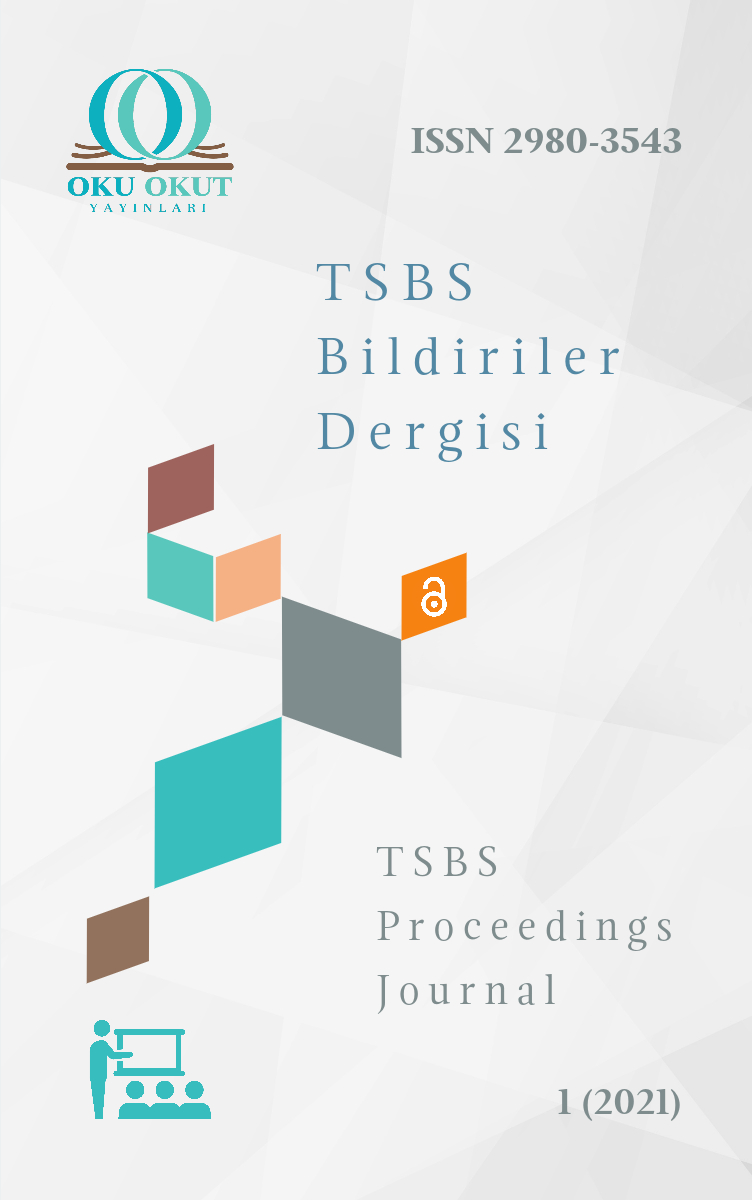An Analysis of the Concepts of Khawf and Raja’ with Respect to Ihyā’ ‘ulūm al-dīn
Havf ve Recâ Kavramlarının İhyâʾü ʿulûmi’d-dîn Eseri Özelinde Analizi
Throughout their lives, individuals perform many actions. Fear can be influential in some of these actions, while a sense of hope permeates others. Individuals aim to lead a balanced life between these two emotional states. In the management of emotions, religion and Sufism assume a key role. In Islamic culture, Sufism is both a lifestyle and scientific discipline that prioritizes raising qualified individuals who can manage their emotions accurately and thus earn the consent of Allah. There are two basic concepts discussed in Sufi works: khawf (fear) and raja’ (hope). While the feeling of not being a proper servant of Allah causes fear, the thought that Allah will forgive the sins and faults of His servants gives the feeling of raja’ (hope). This study addresses these two concepts based on status and stages in Sufism. Due to the importance, they give to these concepts, various Sufi schools have emerged. al-Ghazzālī (d. 505/1111), for instance, studied the concepts of khawf and raja’ under a separate heading in his work titled Ihyā’ ‘ulūm al-dīn. In this study, al-Ghazzālī’s understanding of khawf and raja’ was analyzed, with particular reference to his work Ihyā’ ‘ulūm al-dīn. He discusses khawf and raja’ in relation to the heart of the servant and states that these feelings should be found in a balanced way in the individual. In this respect, he compared khawf and raja’ to the two wings of a bird. Just as a bird cannot fly without one of its wings, humans must always be in these two states. He notes that the predominance of one of these feelings will disturb the balance of the servant and harm his/her life of servitude. Whoever is dominated by fear and devotes his/her life to worship in a way that harms life, he/she is directed towards extremism. Whoever despairs and abandons worship altogether, he/she too falls into disbelief and begins to distance himself/herself from religion. A balanced feeling of khawf supports the individual’s effort to live in line with Allah’s consent. With the feeling of raja’, the servant turns to Allah and worship that pleases Him. With this feeling, the servant repents to Allah and hopes that his repentance will be accepted. Al-Ghazzālī does not say which of these two concepts is superior; he notes that the superiority depends on the emotional state of the person. If despair and pessimism prevail in the heart of a person, seeking forgiveness from Allah is superior for him/her. On the other hand, for a person who thinks that Allah will not punish him in any way, the feeling of khawf (the fear that Allah will bring him to account) is superior. This study discussed al-Ghazzālī’s views of khawf and raja’; it briefly evaluates his ideas from a mystical point of view.
Yaşam süresince bireyler birçok eylem gerçekleştirirler. Bu eylemlerin bir kısmında korku bir kısmında da ümit duygusu etkili olabilmektedir. Bireyler, bu iki duygu arasında dengeli bir yaşam sürmeyi hedeflerler. Duyguların yönetilmesinde dinin ve özellikle tasavvuf anlayışlarının katkısı bulunmaktadır. İslam kültüründe tasavvuf, duygularını doğru yönetebilen nitelikli bireylerin yetişmesini ve bu sayede Allah’ın rızasına ulaşılmasını önceleyen bir yaşam tarzı ve ilmi disiplindir. Tasavvuf eserlerinde bu kapsamda konu edinilen temel iki kavram vardır: Havf (korku) ve recâ (ümit). Allah’a layıkıyla kul olamama duygusu havfa (korkuya) neden olurken Allah’ın kullarının günah ve kusurlarını affedeceği düşüncesi de recâya (ümite) kapılmaya yol açar. Bu iki kavram tasavvuftaki hâl ve makam çerçevesinde değerlendirilmiştir. Bu kavramlara verdikleri önem nedeniyle çeşitli tasavvuf ekolleri ortaya çıkmıştır. Gazzâlî (öl. 505/1111) İhyâʾü ʿulûmi’d-dîn adlı eserinde havf ve recâ kavramlarını ayrı bir başlık altında incelemiştir. Bu çalışmada Gazzâlî’nin havf ve recâ anlayışı, İhyâʾü ʿulûmi’d-dîn eseri özelinde analiz edilmiştir. O, havf ve recâyı kulun kalbi hâllerine göre değerlendirerek bu duyguların bireyde dengeli bir şekilde bulunması gerektiğini belirtmiştir. Bu açıdan havf ve recâyı bir kuşun iki kanadına benzetmiştir. Nasıl ki bir kuş diğer kanadı olmadan uçamazsa insan da daima bu iki hâl üzere bulunmalıdır. Ona göre bu duygulardan birinin ağır basması kulun dengesini bozacak ve kulluk yaşantısına zarar verecektir. Kimde korku hâkim olur ve hayatına zarar verecek şekilde ibadete yönelirse ifrata, aşırılığa yönelmiş olur. Kimde ümitsizlik hâkim olur ve ibadeti hepten terk ederse o da tefrite düşer, dinden uzaklaşmaya başlar. Havf duygusu dengede olduğunda ise bireyin Allah’ın rızasına uygun yaşama çabasına destek olur. Kul recâ duygusu ile de Allah’a ve onu razı edecek ibadetlere yönelir. Kul bu duygu ile Allah’a tevbe eder ve tevbesinin kabul olmasını recâ (umut) eder. Gazzâlî bu iki kavramın hangisinin daha üstün olduğunu söylemez, üstünlüğün kişinin bulunduğu kalbî hâle göre değişeceğinden bahseder. Bir kişinin kalbinde Allah’ın merhametinden ümit kesme ve karamsarlık ağır basarsa onun için recâ, Allah’tan bağışlanma ummak üstündür. Allah’ın kendisine hiçbir şekilde ceza vermeyeceğini zanneden kişi için de havf (Allah’ın hesap soracağından korkma) duygusu daha üstündür. Gazzâlî’nin havf ve recâ görüşlerinin ele alındığı bu çalışmada, özetle onun tespitlerinin tasavvufî açıdan değerlendirilmesine yer verilmiştir.

Telif Hakkı (c) 2021 Sema Bayar
Bu çalışma Creative Commons Attribution-NonCommercial 4.0 International License ile lisanslanmıştır.
CC BY-NC 4.0 lisansı, eserin ticari kullanım dışında, her türlü ortam ve formatta paylaşılmasına, kopyalanmasına, çoğaltılmasına ve orijinal esere uygun şekilde atıfta bulunmak kaydıyla yeniden düzenlenmesine, dönüştürülmesine ve eser üzerine inşa edilmesine izin verir.
İndir
Makale Bilgileri
- Konu Bildiriler
- Gönderim 20 Ağustos 2021
- Yayım 21 Ağustos 2021
- Sayı Sempozyum 1 (2021): TSBS Bildiriler Dergisi
- Bildiri Bilim Alanı Bildiriler
Bayar, Sema. “Havf Ve Recâ Kavramlarının İhyâʾü ʿulûmi’d-dîn Eseri Özelinde Analizi”. Türkiye Sosyal Bilimler Sempozyumu 1 (August 21, 2021), 133-136. https://doi.org/10.55709/TSBSBildirilerDergisi.1.42






